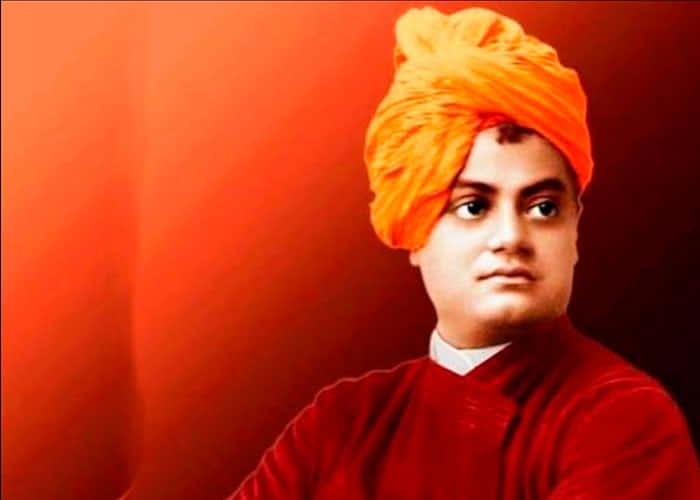Swami Vivekananda’s Address
Share this post
The story of Swami Vivekananda (1863-1902) starts with a temple priest named Sri Ramakrishna (1836-1886) who lived near Calcutta.
He was a mystic, a person who had visions of God and many profound spiritual experiences. Though not formally educated, he attracted followers from the city’s prominent families. One was an 18 year old college student named Narendranath Dutta. When they first met, Narendra asked Ramakrishna why he believed in God. Ramakrishna replied, “Because I see Him just asI see you here, only in a much more intense sense.” Narendra took Ramakrishna as his guru and was trained by him for the next five years. After Ramakrishna’s death, Narendra took vows as a Hindu monk, becoming Swami Vivekananda. He gave up his further education and instead set off on pilgrimage across India. He deeply impressed many people in Madras. They raised money door to door to pay for his travel to America for the 1893 Parliament of the World’s Religions. At that interfaith congress in Chicago, the cultured and eloquent 30 year old swami was well received. In his opening talk, he declared, “We believe not only in universal toleration, but we accept all religions to be true.” The popularity of this Hindu message of respect and tolerance alarmed some Christian participants who had hoped the Parliament would prove their religion superior to others.
The New York Herald reported at the time, “Vivekananda is undoubtedly the greatest figure in the Parliament of Religions. After hearing him, we feel how foolish it is to send missionaries to this learned nation.” Another reporter wrote, “The impertinence of sending half educated theological students to instruct the wise and erudite Orientals was never brought home to an English-speaking audience more forcibly.” Vivekananda returned to India as hero. He aroused a new pride among Hindus and kindled in India’s youth a nationalist spirit. Vivekananda founded the Ramakrishna Mission as a religious and educational institution to address India’s social problems. He died on July 4, 1902, at age 39. Freedom fighter Subhash Chandra Bose aptly called Swami “the maker of modern India.”
Vivekananda was not the first Indian religious and social reformer of the 19th century. Raja Ram Mohan Roy sought to counter the criticisms of Hinduism made by the British missionaries. He founded the Brahmo Samaj in 1828 as a new religion with Christian-style services. Swami Dayananda Saraswati was a Hindu traditionalist. He began the Arya Samaj in 1875 to revive Vedic society and religion. He believed Hinduism could be purified by a return to the teachings and practices of the Vedas. Both the Brahmo Samaj and Arya Samaj encouraged Indians to be egalitarian and do more social service for the poor.
Vivekananda, on the other hand, had a powerful impact both on India and the West. In particular, he introduced the Hindu idea that all religions deserve respect as valid paths to God, an idea now firmly established in America. In 2008, polls found that while 76% of Americans identify themselves as Christian, 65
Swami Vivekananda’s Address To The Parliament Of The World’s ReligionsSimilar Posts : பலி பீடம் , Swami Vivekananda’s Address, Rangoli, மந்திரம்தான் பொய்யானால் பாம்பை பாரு, What is Vishwakarma, See Also:Vivekananda Hinduism

Comments